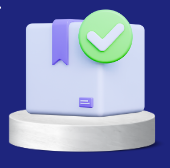Abstract
The rapid increase in connected devices within the automotive industry has driven the evolution of vehicles that can interact with other connected devices, such as smart traffic lights and speed signs, to enhance driving comfort and support smart-city initiatives. Remote software updates allow for ongoing improvements without visiting a manufacturer’s facility. However, this connectivity also raises cybersecurity concerns, as cybercriminals may exploit these systems, prompting the implementation of UN regulations 155 and 156 to standardize cybersecurity and software update protocols.
The use of the ERATOSTHENES framework targets to the improvement of the detection and the response phase of the attack, which is the main industry goals. The objective of the V2I/V2V secure communication scenario is to enhance security during the establishment of connections between vehicles and either external roadside elements or other vehicles. Therefore, ERATOSTHENES framework is employed to assess the trustworthiness of the external elements. In the first communication type (i.e., Vehicle to Infrastructure) a vehicle, using its On-Board Unit (OBU), forms a connection with a smart traffic light. This interaction enables the vehicle, for example, to assess if it should proceed at its current speed or decelerate. In the second communication type (i.e., Vehicle to Vehicle) , one vehicle seeks to establish communication with another, aiming to enhance traffic management, such as providing information on congestion, or boost safety by alerting about potential accidents.
The objective of the Remote Software Updates scenario is to ensure that the software updates are securely sourced from a trusted repository, as updates can potentially open gateways for malicious attacks.
Expected innovations:
- Facilitate the shift from bench deployment to real-world implementation for secure Connected Vehicle interactions.
- Serve as a key enabler of trust in vehicle-to-vehicle, vehicle-to-infrastructure, or vehicle-to-cloud communications.
- Act as a unified enabler within over-the-air software update processes, addressing critical issues related to vehicle cyberattacks.
Value Proposition
DLT is the basis of the ERATOSTHENES framework, as it supports the main services for the management of the lifecycle of IoT devices i.e. Identity Management, Trust Management, Recovery with a secure, trusted and transparent infrastructure to store and share information such as identities, trust scores, cyberthreat information etc.

Identity Management

Process optimisation

Automation